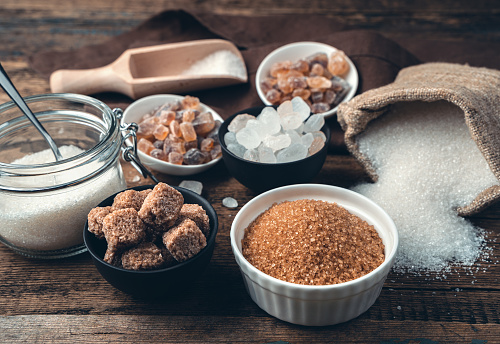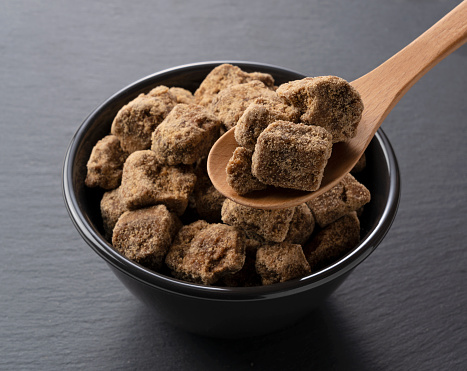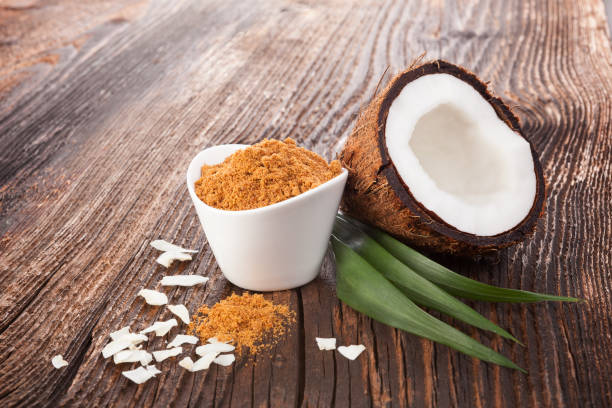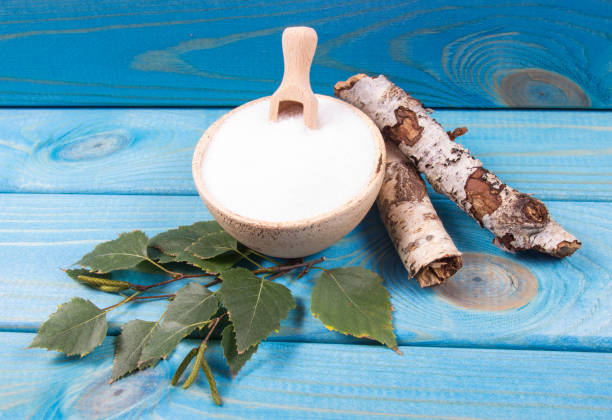Small white square that has always made us vibrate from the top of these few grams, sugar is of all parts. Comforting “duck” in the first coffee of the morning, regressive golden syrup to top our pancakes, reassuring powder that gives shape to our four-quarters, it gives us pleasure and nourishes our gray cells. Yes but! Sugars, there are everywhere and not only in pastries, we must learn to spot them, to use them well, and especially to consume them wisely. Semolina sugar or sucrose is the most common. It is now completed by a plethora of offers: honey, syrup or maple sugar, rapadura, muscovado, Okinawan black sugar, but also natural sweeteners (stevia, birch sugar) or chemical (aspartame) not to mention coconut sugar or agave syrup highlighted with great marketing hooks despite their richness in fructose. Except for sweeteners, all sugars are equal from a caloric point of view (400Kcal/100g), but not all are processed in the same way in the body. It is, therefore, necessary to privilege diversity without giving exclusivity to a single sugar to vary the taste, the pleasure, and take care of its health. This does not mean that you should deprive yourself of dessert! Inspired by the reflections of the best pastry chef in the world Pierre Hermé, here are our nine tips to vary and magnify the uses of sugars.

1. Icing sugar, to melt in the cake… In shortbread, icing sugar with a very fine particle size allows a better dispersion in the flour and a better melting. The advantage: the obtaining of a homogeneous coloration, brittle and less crumbly shortbread. The taste of sugar is more present, that of butterless pronounced than if we had used semolina sugar.
2. Sugars with large particle size, for contrast In buns or crumbles, the crystal sugar added in the dough does not melt completely when cooked, it brings a contrast of textures and gluttony.
3. Okinawa black sugar, taste, and color It is a mixture of raw sugar, brown sugar, and molasses. Sugar with a marked taste, licorice, very interesting to flavor a cake. In addition to the flavor, it gives a nice amber color and an incredible fluffiness to the dough. This sugar is sometimes very wet, it is then recommended to dry it beforehand in the oven 50 ° C for two hours.

4. Rapadura and muscovado sugars, for fragrance To be used for their licorice taste. These sugars are often used in a mixture with semolina sugar to modulate their fragrances.
5. Coconut sugar, to vary the pleasures is used sparingly. It is interesting to vary the tastes instead of semolina sugar to make, for example, shortbread. Its sweetening power is identical to that of sucrose. Note: its supposedly low glycemic index is controversial.

6. Molasses, for syrupy seasoning, has a strong sweetening power and a more or less tart taste depending on its origin. There is molasses from sugar cane, pomegranate, date, carob. Perfect in touches to season a plate of fresh fruit.
7. Honey, for its silkiness
To give softness, taste, and beautiful coloring to a cake, we replace 1/3 of the semolina sugar with honey (chestnut honey, maquis honey). Interesting also make a ganache for its silkiness and taste. Pay attention to its higher sweetening power than sucrose and its water content.
8. Maple syrup, for its character
To concentrate its character, it is reduced by half. It then sweetens and perfumes an ice cream or cream. For a cake dough, maple sugar is preferred to maple syrup, which is more suitable because it is less humid.
9. Birch sugar or xylitol, to sweeten less

The natural sweetener is interesting to use. Less caloric, its sweetening power is identical to that of white sugar (1g of birch sugar = 1g of white sugar). It will be chosen for example for soft madeleines coupled with sucrose (ratio 4 / 1) or for fruit paste. True or false? Sugars are EVERYWHERE TRUE. Sugars are necessary for the proper functioning of our brain, but this is not an excuse to gorge on them, it’s all about balance. If we find it naturally in fruits, milk, sweet products, but also pulses, starchy foods, or bread, we must also think of the many hidden sugars in the diet (cold cuts, aperitif cookies, sauces, industrial dishes, breakfast cereals, some sodas, and fruit juices …). Recall that ANSES sets a daily consumption limit of 100g / d of sugars including 50g of fructose, which is quickly reached with 2 or 3 fruits per day. Some sugars are to be banned
Don’t miss interesting posts on Famousbio










